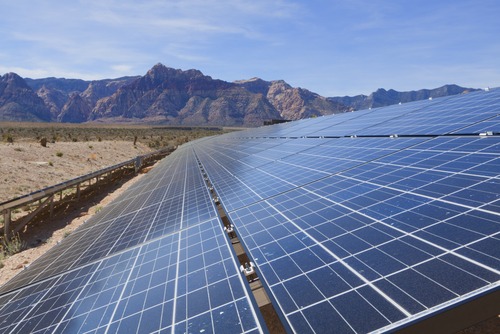Experts predict two years of uncertainty following Biden solar panel tariff pause

(Corrects paragraph 11 to reflect that ACORE CEO Greg Wetstone said it was unlikely the executive order could be overturned through litigation.)
Energy sector experts are looking to the federal government for guidance following the White House’s announcement this week that it would pause tariffs on solar panels made in Southeast Asia in response to a Department of Commerce (DOC) probe that jeopardized solar projects in the United States.
The American Council on Renewable Energy’s (ACORE) Finance Forum on June 7 featured a panel discussion about what impact President Joe Biden’s executive order to waive any new tariffs for two years on solar panel imports from Cambodia, Malaysia, Thailand and Vietnam would have on the solar industry, as well as proposed clean energy tax provisions currently under consideration in Congress.
The president on Monday also authorized the Defense Production Act (DPA) to accelerate production of clean energy technologies, including solar panel parts, while making the most of federal procurement to spur additional solar manufacturing capacity.
Biden’s announcement was applauded by renewable energy groups, saying it would be a boost for domestic solar installations. The DOC investigation into possible trade violations by the solar industry in Southeast Asia has hampered broader adoption of solar energy, advocates said, and put at risk the Biden administration’s goal of significantly cutting carbon emissions by 2030.
Greg Wetstone, ACORE’s president and CEO, moderated Tuesday’s discussion with Pat Reiten, senior vice president of Public Policy at Berkshire Hathaway Energy, and Caroline Golin, global head of Energy Market Development and Policy at Google.
Golin said while the executive order was a relief, it also left the industry with some uncertainty. “I think that we were all holding our breath and excited to see this,” she said. “But as an industry, we are scrambling now to figure out what this actually means.”
For investments that look 10, 20 and 30 years down the road, having a two-year window where investors don’t know what’s going to happen is not good for the market, she added.
Reiten said it will take time for the United States to re-establish itself in the global renewable energy marketplace, even with the help of the White House’s announcement.
In the short-term, he said, the hope is that the actions would decrease the risk for developers and that they would provide the opportunity to continue working on tools that would bolster domestic imports.
The use of the DPA, along with funding of domestic wind and solar incentives that are part of the Budget Reconciliation package, would also help to advance the industry.
Wetstone said he believed it was unlikely the executive order could be overturned through litigation. “It’s very hard for anyone to reverse (a presidential executive action) with a lawsuit, so I think that provides a lot of security,” he said. ACORE’s counsel said in its view the president’s action seems to be defensible and legal.
The panelists said they are closely watching the clock on what happens with proposed clean energy tax policies in Congress. With the August break looming, and election campaigning close behind it, they said action needs to happen soon.
“We all thought (Memorial Day) was the deadline by which a top line agreement had to happen in order to be able to get to the floor in time and work at through the summer before election season kind of derails everything. That deadline came after an earlier (Easter) deadline… and here we are in early mid-June and we don’t have a top line agreement,” Reiten said. “I’d like to believe that the package has to be right there and that there are still major open items.”
Electric utility companies, for example, have urged Congress to pass legislation that provides optionality in choosing between the production tax credit and investment tax credit for solar; new tax credits for energy storage, transmission, and hydrogen; and expansion of the electric vehicle tax credit, among other priorities.
Both Reiten and Golin agreed that the amount of funding in the Infrastructure Investment and Jobs Act for clean energy wasn’t enough to fully fund planned and already started projects and that private companies were likely going to need to step up to fill in the gap.
Still, Golin said, clean energy is an industry to be reckoned with now.
“I think we just have to back up and recognize the run on renewables. This is not a marginal industry anymore,” she said.
Alongside the growth in renewable energy resources are issues like jobs, the labor force, manufacturing, and partnerships within the industry and throughout the country, Golin said. Finding the workforce will also be crucial in the industry’s success.
“We need to be engaging in the workforce and in labor and figuring out how we can partner together on this,” she said. “As a whole, everyone is struggling in this area. Across the economy we’re struggling with labor issues. It’s not necessarily unique to (our industry) and I don’t know what the exact instrument is, but I do think that the conversation needs to be brought up.”
